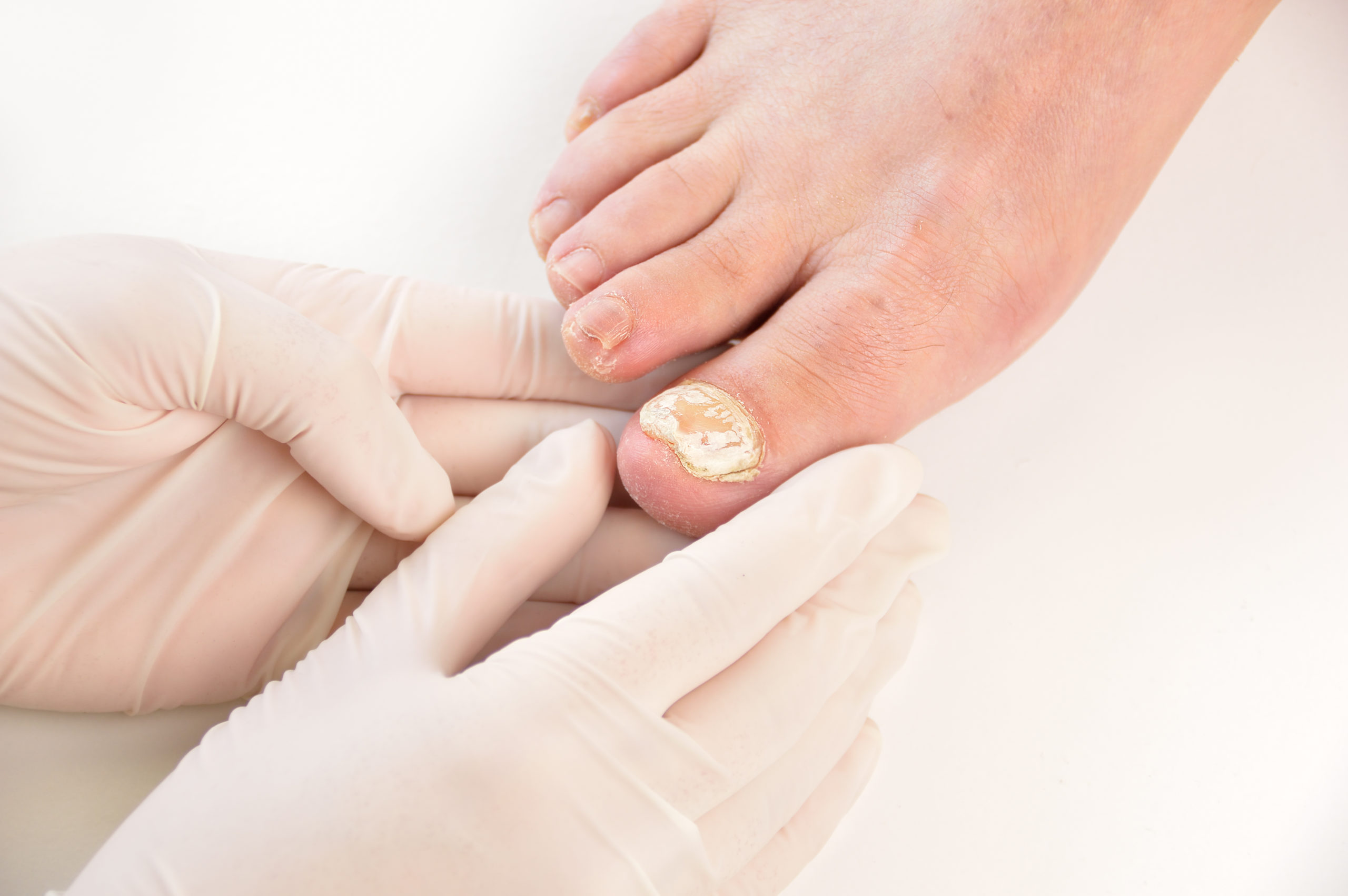Nail Fungus


Nail fungus, also known onychomycosis, is a common fungal disorder which starts as a white or yellow spot right under the tip of your toenail or fingernail
What is nail fungus?
It is a common infectious condition that usually starts with a yellow or white spot under your finger or toenails. If the infection becomes severe, it will cause your nails to discolor. As fungal infection goes deeper, the nail fungus may cause the nail to thicken, discolor and crumble at its edge
Nail fungus infections can spread from nail to nail, triggering the nails to begin thickening and crumble at the edge. The nail infections are caused commonly by a type of fungus known as dermatophyte. Nail infections are also caused by yeast and molds.
Fungal nail infection is more common in older adults because as the nails age, they can become brittle and dry and the resulting cracks in the nails allows the fungi to enter. Other factors are reduced immunity or poor circulation.
What are the symptoms of nail fungus?
Some of the major symptoms of this disease are,
- White or yellow spots under your finger or toenails
- Discoloration of nails
- Thickened nails
- Distorted shape of your nails
- Your nails may have debris under them, causing them to have a dark color
- Slightly foul smell coming from your nails
When should you see a doctor?
People generally use home remedies and self-care steps to cure nail fungus before they decide to see a doctor. But if the self-care steps do not help, and your nails start becoming increasingly discolored, thickened, or deformed, you must see a doctor right away.
Request an appointment at Apollo Hospitals
Call 1860-500-1066 to book an appointment
What are the risk factors and complications of nail fungus?
Risk factors
If you are getting older, suffer from heavy sweats, or have a history of athlete’s foot, you have a risk of developing this disease. If you have a nail, skin injury, or are diabetic, you may also be at risk. Walking in damp public areas such as a gym, swimming pool, or shower rooms may also increase your risk of this disease.
Complications of Nail Fungus
- It can be painful, and it can cause your nails to be permanently damaged.
- It may also spread the infection beyond your nails.
- If you have diabetes, you are at higher risk of cellulitis, a bacterial skin infection. So any relatively minor injury to the feet, including a nail fungal infection, can cause more serious complication.
How do we prevent nail fungus?
- Wash your hands and feet regularly, and if you happen to touch an infected nail, wash your hands with sanitizer. Disinfect your nail clippers and trim the nails straight across.
- Wear sweat-absorbing socks and shoes that let your feet breathe.
- Wear footwear in damp public areas.
- Don’t wear artificial nails or nail polish and discard old shoes.
- Trim nails straight across, use a file to smooth the edges and file down thickened areas as well
- Either discard old shoes or treat them with anti-fungal powders or disinfectants
What are the treatment options for nail fungus?
- Oral antifungal drugs are the first and foremost treatment options for nail fungus. Drugs like terbinafine and itraconazole will help your nails grow free of infection.
- You can use medicated nail polish called ciclopirox to paint your nails and the surrounding skin. Apply it for 7 days, wipe it with alcohol, and apply it again. Use it as advised by the doctor.
- Medicated nail creams are another treatment option that you can apply to your infected nails. If you thin the nails and then apply it, this cream will work better.
- Some surgery options are also available, which require the doctor to temporarily remove your nail and apply the antifungal cream directly on your skin where the infection is rooted.
Conclusion
Nail fungus is not a life-threatening disease, but it will not go away on its own too. So, if you witness nail fungus symptoms, it is better to get yourself checked as soon as possible. Otherwise, the symptoms will get worse, and you may have to remove your nails permanently if the medicines seem to fail.
Frequently Added Questions (FAQs)
What is the best home remedy for getting rid of nail fungus?
Mix baking soda with water at room temperature and apply the paste with a cotton swab on your nails. Leave it for 15 minutes before washing it. It may help your nail fungus to go away.
What is the fastest way to cure nail fungus?
Laser treatment is the fastest way to cure nail fungus. It will directly kill the microorganisms under your nails that are causing the infection.
Can we leave nail fungus untreated?
No, you cannot. If you don’t treat it, it will spread to your other toenails and toe skin.
© Copyright 2024. Apollo Hospitals Group. All Rights Reserved.
 +91 8069991061
Book Health Check-up
+91 8069991061
Book Health Check-up







